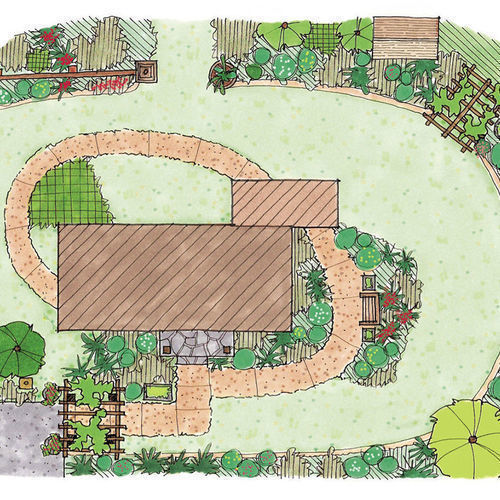
When I first began gardening I remember a more experienced friend asking me, “How deep are you going to make your borders?” I turned to her with a confused look, thinking, “What on earth is she talking about? Does she mean garden beds?” Not wanting to seem totally daft, I quickly ran inside and grabbed a few gardening books from the shelf to try and research what that term meant. This was before the days of Google, mind you.
I learned quickly that a “border” was simply a long-ish, narrow-ish garden bed. The actual definition seemed to vary widely, because the dimensions all depend on the site. Garden borders are perhaps most frequently associated with larger English estate landscapes, where the long pathway leading to the grand front entry would normally be flanked on both sides with skinny garden beds. These stunning plots would be filled with cottage garden classics—domed shrub roses, pristine peonies (Paeonia spp. and cvs., Zones 3–8), and billowy tufts of catmint (Nepeta spp. and cvs., Zones 4–9) and lady’s mantle (Alchemilla spp. and cvs., Zones 3–8).
Today, the sky is the limit when it comes to borders. Yes, you can keep your designs more traditional and English in style. But mixing things up is also a good approach. In fact, as you’ll read in several of the articles below, the more varied the plant material is, the more apt your eye is to keep moving down the length of the bed. A sturdy assortment of perennials, shrubs, and even small trees gives the best borders structure and seasonal interest year-round. Incorporating annuals and tropical adds even more drama, as these plants are often the dominate focal point that overflowing beds need.
One thing that is universal among all the best border plantings is a strong, clean edge. You can choose to accentuate the bed lines with hardscape (brick, stone, or metal) or commit to cutting a precise line in the turf, if you prefer a more organic look. There are pros and cons to each, which you can read more about below. Regardless of your approach, most gardeners agree that when it comes to borders, they are truly breathtaking if done right.
-
 Design
DesignBuilding Better Borders
Use plant combinations that focus on complementary colors, textures, and forms
-

-

-
 Design
DesignA Strategy for a Long Border
Repeating colors, textures, and forms creates a whole that’s greater than the sum of its parts
-
 How-To
How-ToPerfect Edges for Your Beds and Borders
Follow these four steps to keep lawns and beds looking neat
-
 Article
ArticleA Border Worth Waiting For
-
 Article
ArticleLiven Up Your Long Border
-
 Design
DesignGive Your Border a Tropical Punch
Use exotic plants as focal points, as accents, and in a vignette
-
 Pacific Northwest Regional Reports
Pacific Northwest Regional ReportsSpring Border Design for the Northwest
-
 How-To
How-ToPutting Your Borders to Bed













